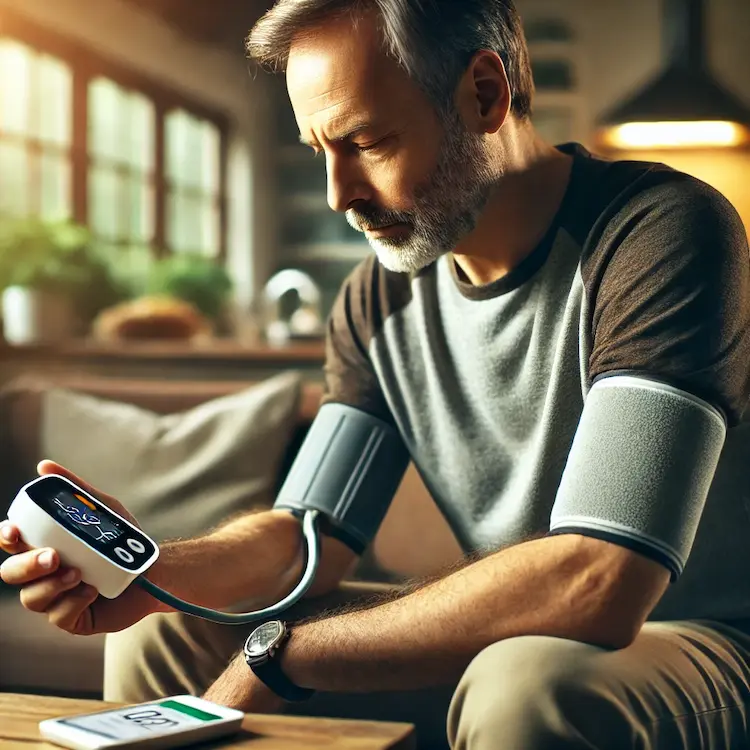Blood pressure (BP) plays a fundamental role in cardiovascular health. It serves as a key indicator of how efficiently the heart pumps blood through the arteries. Understanding blood pressure, its implications, and its management can significantly impact overall health and longevity. This article explores the importance of blood pressure, societal and health impacts, measurement methods, and tools like sphygmomanometers in monitoring cardiovascular health.
Understanding Blood Pressure and Its Role in Cardiovascular Health
Blood pressure is the force exerted by circulating blood against arterial walls. It is measured in millimeters of mercury (mmHg) and recorded as two values:
- Systolic Pressure (Top Number): Measures the force exerted when the heart contracts and pumps blood.
- Diastolic Pressure (Bottom Number): Measures the pressure when the heart is at rest between beats.
Maintaining an optimal blood pressure range (typically 120/80 mmHg) is crucial for cardiovascular health. Deviations can indicate underlying health risks such as hypertension (high blood pressure) or hypotension (low blood pressure).
The Importance of Blood Pressure in Health and Society
Health Implications
- Hypertension (High Blood Pressure): A leading risk factor for heart disease, stroke, and kidney failure. It can be asymptomatic for years, making routine monitoring essential.
- Hypotension (Low Blood Pressure): Can cause dizziness, fainting, and in severe cases, shock due to insufficient blood supply to vital organs.
- Impact on Other Organs: Chronic high blood pressure can lead to heart attacks, aneurysms, and organ damage.
Societal Impact
- Global Health Burden: According to the World Health Organization (WHO), hypertension affects over 1.28 billion adults worldwide.
- Healthcare Costs: Cardiovascular diseases account for $555 billion in healthcare costs annually in the U.S. alone.
- Workplace Productivity: Hypertension-related conditions result in lost productivity due to absenteeism and medical treatments.
Methods and Tools for Measuring Blood Pressure
Traditional and Modern Measurement Techniques
| Method | Description | Accuracy Level | Usage |
|---|---|---|---|
| Mercury Sphygmomanometer | Uses mercury to gauge pressure. Gold standard in accuracy but now less common due to mercury hazards. | Very High | Hospitals, Research |
| Aneroid Sphygmomanometer | Uses a mechanical dial instead of mercury. Requires proper calibration. | High | Clinics, Home Use |
| Oscillometric Digital Monitors | Automated digital devices that use electronic sensors to detect arterial pressure changes. | Moderate to High | Home, Clinical, Wearable Devices |
Sphygmomanometer: The Standard Tool
A sphygmomanometer is a device used to measure blood pressure. It consists of an inflatable cuff, a measuring gauge, and a stethoscope (for manual versions). Variations include:
- Manual (Aneroid or Mercury) Sphygmomanometers: Require professional use.
- Digital Monitors: Easy for home use, but may have minor accuracy variations.
Smart Blood Pressure Monitors
Modern advancements have introduced smart BP monitors that sync with mobile apps, offering real-time tracking and alerts. Devices like the Omron Platinum BP Monitor and Withings BPM Connect provide convenience and improved accessibility.
How to Maintain Healthy Blood Pressure Levels
Lifestyle Modifications
Dietary Changes:
-
- Adopt the DASH (Dietary Approaches to Stop Hypertension) Diet.
- Reduce salt (sodium) intake below 2,300 mg per day.
- Increase potassium-rich foods like bananas and spinach.
Regular Physical Activity:
-
- Engage in at least 150 minutes of moderate-intensity exercise per week.
- Activities like walking, swimming, and strength training improve heart health.
Weight Management:
-
- Maintain a healthy BMI (18.5 – 24.9 kg/m²) to reduce hypertension risks.
Stress Reduction Techniques:
-
- Practice meditation, yoga, or deep breathing exercises.
- Ensure 7-9 hours of quality sleep per night.
Limiting Alcohol and Caffeine:
-
- Excessive alcohol and caffeine intake can elevate blood pressure.
Medication and Monitoring:
-
- Some individuals require antihypertensive drugs prescribed by healthcare professionals.
- Regular BP monitoring at home ensures better management.

Comparing Different Approaches to Blood Pressure Management
| Approach | Effectiveness | Best For |
|---|---|---|
| Lifestyle Modifications | High | Preventing or managing mild hypertension |
| Medication | High | Severe hypertension or high cardiovascular risk |
| Regular BP Monitoring | Moderate to High | Early detection and management |
| Alternative Therapies (e.g., Acupuncture, Herbal Remedies) | Low to Moderate | Complementary support, but not a primary treatment |
The Future of Blood Pressure Management
- AI and Wearable Technology: Innovations like the Apple Watch’s BP detection and AI-powered smart monitors provide continuous tracking.
- Telemedicine and Remote Monitoring: Patients can now share BP readings with doctors remotely for real-time adjustments in care plans.
- Gene Therapy and Personalized Medicine: Emerging research explores genetic interventions for hypertension management.
Conclusion
Blood pressure is a crucial determinant of cardiovascular health. Uncontrolled hypertension can lead to severe complications, while proper monitoring and lifestyle adjustments can prevent and manage risks effectively. With advancements in technology, blood pressure management is becoming more accessible, ensuring early detection and better health outcomes.
Key Takeaways
- Blood pressure readings provide critical insights into heart health.
- Hypertension is a major global health concern, contributing to heart disease and high medical costs.
- Various measurement tools exist, from manual sphygmomanometers to advanced digital monitors.
- Lifestyle modifications play a significant role in controlling blood pressure.
- Emerging technologies like AI and wearable monitors are shaping the future of blood pressure management.
Actionable Recommendations
- Monitor your BP regularly, especially if you have a family history of hypertension.
- Maintain a healthy diet and exercise routine to manage BP naturally.
- Consult a doctor if your BP readings consistently exceed 130/80 mmHg.
- Use validated BP monitoring devices and follow proper measurement techniques.
- Stay updated on new advancements in cardiovascular health monitoring.



